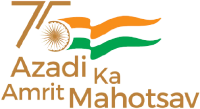The North Indian Ocean (NIO), mainly constituted of two basins - the Bay of Bengal and the Arabian Sea, is vulnerable to the nutrient/toxicant deposition coming via the atmospheric pathway from surrounding continental emissions. Several studies have documented large-scale continental outflow (natural and anthropogenic aerosols as well as pollutants, e.g., trace gases, acidic species, trace metals) from the surrounding arid/semi-arid region, densely populated Indo-Gangetic Plain, and Southeast Asian region. This outflow consists of processed aerosols, which are a potential source of macro and micronutrients to the surface water of both basins and have the potential to modulate various biogeochemical processes within the NIO. We measured macro (inorganic nitrogen) and micro (soluble and total trace elements) nutrients along with aeolian dust concentration in aerosols collected over a wide area of the Arabian Sea and Bay of Bengal. Aerosols were collected on board cruise campaigns during 2015-2020 in different seasons with varying wind patterns. In general, higher trace metal solubility is observed over the Bay of Bengal in contrast to the Arabian Sea, particularly during summer and winter months. However, comparative values were seen during the post-monsoon season. Relatively higher deposition flux was seen for inorganic nitrogen (sum of ammonium and nitrates) in both basins, in contrast to those reported from other oceanic basins. Higher nutrient flux was found to be associated with the continental outflow, which was dominant during the northeast monsoon. These data will provide input to the global biogeochemical models to constrain the supply of micronutrients to the surface water of the North Indian Ocean. In this talk, I will present new results derived from the NIO.
Dr. Ashwini Kumar is a Principal Scientist at the Geological Oceanography Division, CSIR–National Institute of Oceanography, Goa. He obtained his Ph.D. from the Physical Research Laboratory, Ahmedabad, and pursued postdoctoral research at the Max Planck Institute for Chemistry, Mainz, Germany. His research focuses on atmospheric transport of nutrients and trace metals, atmospheric dust characterization, and iron biogeochemistry. Dr. Kumar has published over 40 research papers with more than 1600 citations and serves as a reviewer for leading international journals. He is an active member of several professional societies, including EGU, EAG, and OSI, and has received multiple fellowships and awards, including the prestigious DST-INSPIRE Faculty Award.

